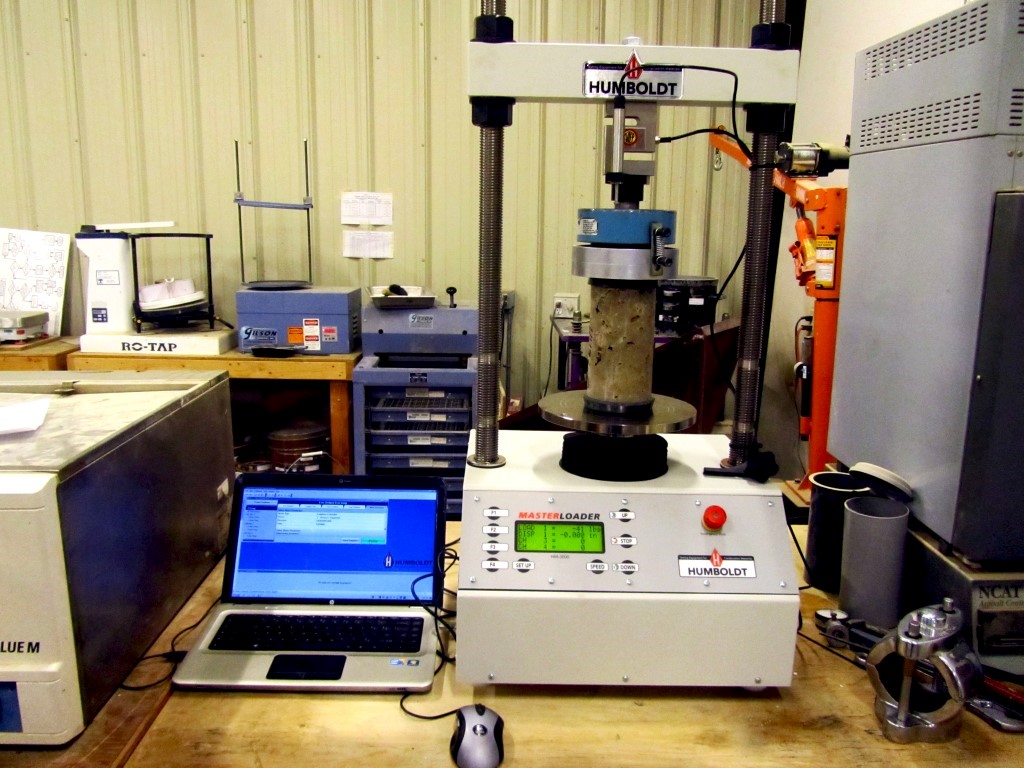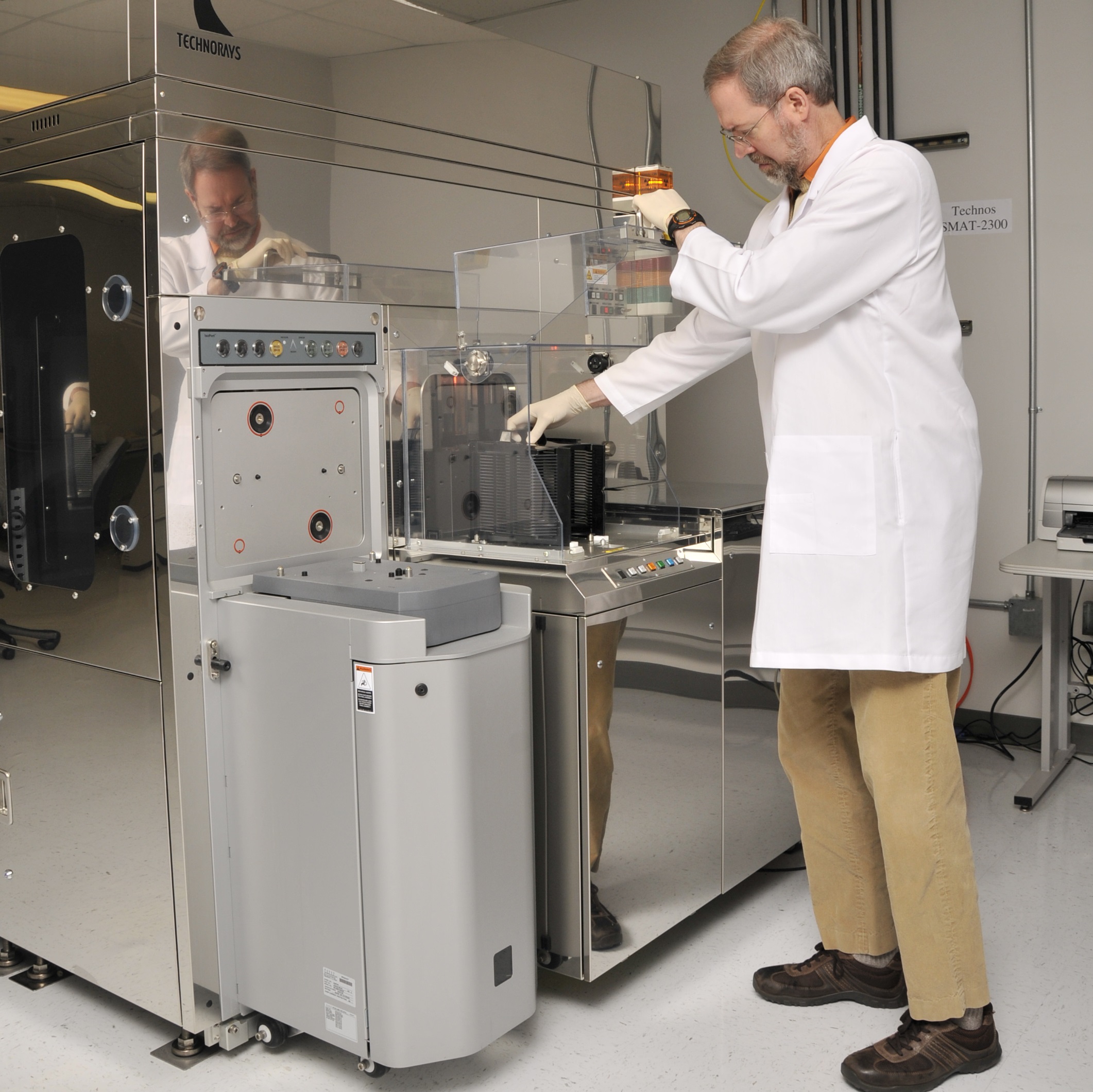Material Testing Lab Solutions: Guaranteeing High Quality and Conformity for Your Jobs
Wiki Article
Revealing the Secrets of Materials: Advancements in Modern Material Screening
In the ever-evolving globe of products science, researchers are continuously seeking ways to unlock the covert secrets of different compounds. The quest to recognize the buildings, behavior, and possible applications of materials has actually led to remarkable technologies in modern-day material testing. From nanotechnology and fabricated intelligence to non-destructive testing and high-throughput screening, brand-new methods are emerging that assurance to change our understanding of products.Nanotechnology: Enhancing Product Examining Capabilities
Nanotechnology has revolutionized material testing by enhancing its capabilities and permitting extraordinary accuracy and precision. With the ability to manipulate and regulate products at the nanoscale, engineers and scientists have had the ability to reveal new understandings right into the behavior and buildings of numerous materials. This has actually opened up a whole new method for product screening, enabling scientists to dig much deeper right into the essential characteristics of materials and discover their potential applications.One of the crucial benefits of nanotechnology in product screening is its capacity to offer extremely specific dimensions. By making use of specialized nanoscale probes and sensors, scientists can acquire thorough details about a material's mechanical, electrical, and thermal homes. This degree of precision is crucial for sectors such as aerospace, automobile, and electronics, where also the tiniest discrepancy from preferred specs can have considerable repercussions.
Additionally, nanotechnology has enabled the growth of unique testing techniques that were previously unthinkable. For instance, scanning probe microscopy methods, such as atomic pressure microscopy and scanning tunneling microscopy, enable researchers to visualize and manipulate materials at the atomic degree. This unmatched degree of control and observation has led the way for developments in recognizing product actions and developing innovative products with tailored homes.
Artificial Intelligence: Changing Product Evaluation
The combination of expert system has actually produced a transformation in material analysis, dramatically boosting the speed, precision, and effectiveness of the process. With the capacity to assess substantial quantities of information in real-time, artificial intelligence (AI) formulas can rapidly identify patterns, anomalies, and correlations that may otherwise go unnoticed by human analysts. This allows researchers and researchers to obtain a much deeper understanding of materials and their properties, leading to the development of improved and brand-new products for different applications.AI-powered material analysis likewise enables for the prediction of material behavior under various conditions, saving substantial time and resources in the testing phase. By mimicing various situations, AI formulas can accurately predict how materials will carry out in various environments, enabling engineers to make enlightened choices regarding their viability for details applications.
Additionally, AI formulas can optimize material testing procedures by automatically readjusting specifications and experiment designs based upon real-time comments (material testing lab). This not only speeds up the screening procedure but additionally guarantees that the optimum amount of details is obtained from each experiment, bring about more extensive and trustworthy results

Non-Destructive Testing: Exploring Products From Within
Non-destructive testing strategies supply an one-of-a-kind means to check out the internal framework and residential properties of products without triggering any kind of damages or modification. These methods have changed the field of product testing by enabling scientists and designers to check out materials from within, without jeopardizing their stability. Non-destructive screening methods utilize numerous innovations and methods to assess products and supply valuable insights right into their structure, issues, and performance.One commonly utilized non-destructive testing technique is ultrasonic testing, which entails sending high-frequency audio waves through a product and examining the mirrored waves to identify its interior framework. This method is commonly utilized to identify defects, such as gaps or fractures, in steels, compounds, and concrete. One more strategy, called X-ray radiography, utilizes X-rays to develop pictures of the inner functions of a material, making it especially useful for evaluating welds and identifying surprise issues.
Various other non-destructive testing methods consist of magnetic particle testing, which utilizes electromagnetic fields to identify surface and near-surface defects in ferromagnetic materials, and eddy present screening, which uses electro-magnetic induction to spot problems in conductive materials. These strategies, in addition to others like thermography and visual inspection, supply valuable details regarding the architectural integrity and quality of materials, guaranteeing their reliability and security in numerous applications.
Non-destructive screening is particularly crucial in sectors such as aerospace, automobile, power, and building, where the efficiency and integrity of products are of utmost relevance. By enabling extensive product evaluation without creating damages or change, non-destructive screening methods play an essential function in making certain the quality and sturdiness of products in a vast array of applications.
High-Throughput Screening: Accelerating Material Exploration
High-throughput screening techniques have actually reinvented the process of product discovery by accelerating the recognition and examination of new products. This method allows scientists to quickly evaluate a lot of materials, making it possible for the identification of promising prospects for further examination.High-throughput screening entails the use of automated robotics and systems to do experiments widespread (material testing lab). This allows researchers to quickly examine a vast array of materials under numerous conditions, such as make-up, pressure, and temperature. By assessing the resulting data, scientists can recognize materials with preferred residential properties, such as high strength, conductivity, my website or thermal stability
Among the key advantages of high-throughput testing is its capacity to speed up the exploration of brand-new products with improved buildings. Traditional techniques of product discovery typically include test and error, which can be time-consuming and ineffective. With high-throughput testing, researchers can systematically explore a huge range of products in a fraction of the moment, considerably accelerating the exploration procedure.
In addition, high-throughput screening can also offer important insights into the underlying structure-property connections of products. By checking a lot of products with differing structures and frameworks, researchers can better comprehend how different factors influence material homes. This expertise can after that be made use of to design and enhance products with specific properties for numerous applications, such as power storage space, electronics, and health care.
Advanced Simulation Techniques: Anticipating Material Efficiency
Advanced simulation strategies play a crucial role in forecasting the efficiency of materials in various applications. These strategies involve the usage of computer versions and mathematical algorithms to imitate the habits of products under various conditions. By mimicing the actions of materials at the atomic and molecular level, scientists can obtain valuable understandings into their mechanical, thermal, and chemical residential properties.Among the essential advantages of innovative simulation methods is their capacity to anticipate material efficiency before physical screening. This not only saves time and sources but also enables scientists to discover a larger range of products and design criteria. In the area of materials layout, simulations can help recognize the ideal structure and structure of a material to attain particular residential properties.

Along with anticipating product performance, these simulation methods likewise help in recognizing the hidden systems that control product behavior. By examining the simulation results, researchers can gain insights into the basic concepts that dictate the residential or commercial properties and efficiency of products.
Verdict
In conclusion, the developments in material testing methods have actually significantly enhanced our understanding and evaluation of various materials. Nanotechnology has permitted for improved abilities in screening and controling materials at the nanoscale. Non-destructive screening has actually enabled us to check out the internal buildings of products without triggering damages.The quest to understand the residential properties, habits, and potential applications of materials has actually led to exceptional advancements in modern material testing. These methods have reinvented the field of product testing by making it possible for engineers and scientists to analyze products from within, without endangering their integrity. By testing a large number of products with differing frameworks and compositions, scientists can better recognize exactly how different aspects influence material residential properties. In the area of materials layout, simulations can assist recognize the ideal structure and Get the facts framework of a material to accomplish particular residential properties.
In final thought, the advancements in material testing techniques have substantially improved our understanding and analysis of various materials.
Report this wiki page